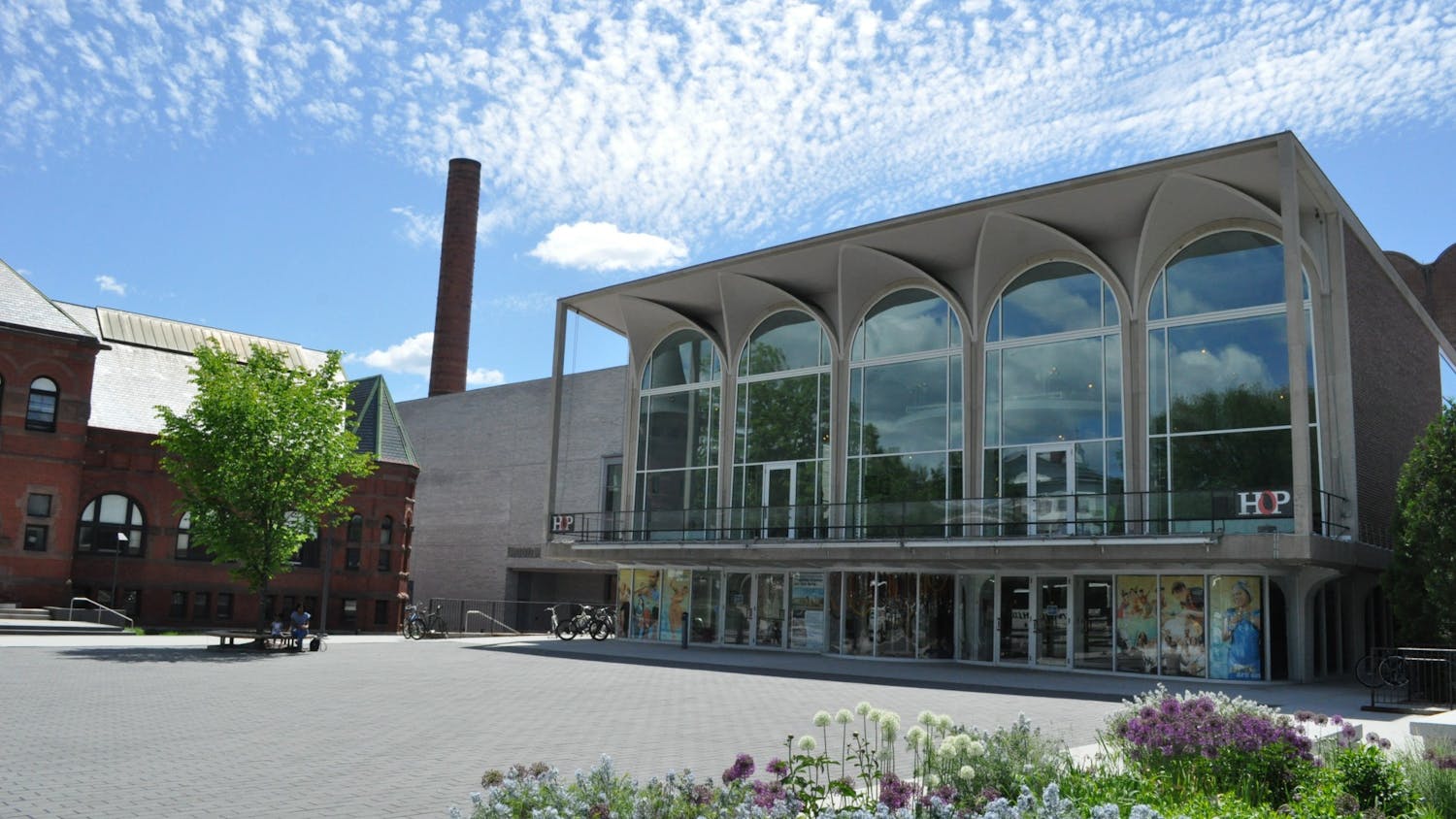While many people regard science as purely objective and art as purely subjective, Daniel Kohn's paintings including "Data Sets," a series currently installed in the public spaces at Dartmouth-Hitchcock Medical Center blur the lines between these seemingly disparate disciplines.
Kohn spent the past six years as an artist in residence at the Eli and Edythe L. Broad Institute a nonprofit research organization affiliated with Harvard University and Massachusetts Institute of Technology where he learned about genome research from various scientists. In an interview with The Dartmouth, Kohn said his studies at the Broad Institute have inspired him to embrace the complexity of interpreting science visually.
Although art and science are part of two separate traditions, Kohn said he believes both mediums have similar goals.
"They're both trying to represent, describe and explain the world," Kohn said.
In addition to citing the similar goals of art and science, Kohn drew parallels between the artistic and scientific processes.
Kohn viewed the scientists he worked with at the Broad Institute as analysts because their job entails sifting through data to search for meaningful patterns. Like these scientists, Kohn described himself as "a highly trained visual analyst." Kohn manipulates and rearranges images to find new patterns in creating his designs, he said.
Although they follow similar methods in their work, artists and scientists do not use the same jargon. In order to better understand one another, Kohn and his scientist colleagues had to learn each other's technical language, according to Broad Institute organic chemist Damien Young.
"Once we had a common language, a common understanding of each other, we could progress in learning each other's craft," Young said.
When he felt sufficiently well-versed in scientific terms and concepts, Kohn began to form visual representations of the atoms and quantum mechanics he was learning about.
Kohn began by painting three-by-three grids on eight-inch square sheets of paper. He scanned these images into his computer, rearranged them and rescanned them as a new pattern.
Before long, Kohn had accumulated a visual data set of over 1,000 tiles.
Kohn said he began to notice certain patterns and sometimes, a lack of patterns among the many tiles displayed in his photo browser.
"There are things that connect and things that don't," Kohn said. "The things that don't are important."
Eventually Kohn moved from small tiles to larger-scale work, rendering his scientific discoveries in oil paint. In his large paintings, Kohn uses obvious layers of thin glaze to illustrate the idea of constant rearrangement that he explored in his smaller data sets. Kohn said working on a larger scale made him more reflective, because he paused to consider the way his pieces interacted with the space they occupied.
Cynthia Reeves who is responsible for bringing "Data Sets" to DHMC and has displayed Kohn's work in her Manhattan gallery said Kohn has created a new visual language over the course of his struggles to combine science and art.
"[Data Sets] has its own liveliness and spontaneous form of brushwork," Reeves said. "People understand that some of the markmaking is [Kohn] making his own visual language a language that can be pieced together in numerous, unique ways."
DHMC arts curator Elisabeth Gordon praised the artist for converting esoteric scientific research into a more accessible medium.
Kohn's pieces translate "concepts and abstract ideas into a visual form," Gordon said.
"Data Sets" is presented in multiple installations throughout DHMC. Kohn said he tried to focus on how his paintings interact with the architecture and space of the hospital, taking into consideration the way his display opens up new spaces in each installation.
"I think the instillation at [DHMC] is really successful because in every instance where artwork is installed there is so much space," Reeve said. "The scale of space gives so much to the scale of Daniel's work. The architectural platform really enhances the way the artwork is seen."
Reeves and Gordon said they hope to bring Kohn and scientists from the Broad Institute to DHMC in early May for a series of talks to highlight the scientific aspects of the exhibit.
"While each piece is beautiful in its own way, it's important for people to understand the concept behind the art," Gordon said.
The series aims not only to offer a new understanding of Kohn's work, but to bring together the Dartmouth medical and studio arts communities and the general public, according to Gordon.
"Data Sets" will be on display at DHMC through July 15.




